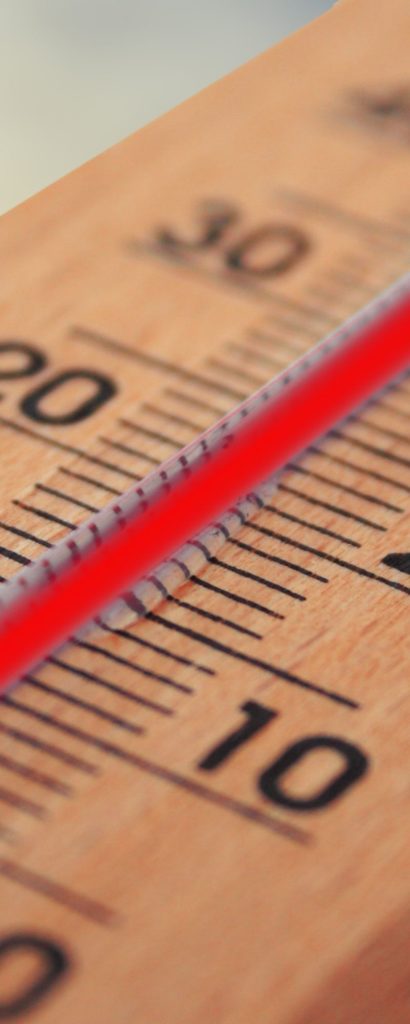11 Benefits of Infrared Clothing: The Sauna in Your Threads For Relief, Recovery, Recharge
The reputed health benefits of controlled infrared radiation from the sauna have been harnessed by a number of companies to produce a startling number of other products you can use with ease. Infrared radiation-emitting pyjamas & outer clothing, underwear, sheets, feminine hygiene products, yoga mats, foot massagers, and eye masks are just a few. Here we’re going to focus on the scientific evidence backing up the claims of infrared clothing, in particular to find out: Does infrared clothing work? and How is infrared beneficial? If at all?
Key points:
- The principle behind infrared clothing is to bring the healing properties of the sauna into daily life
- Infrared clothing sees far-infrared emitting bioceramics or polymers enmeshed in normal fabrics. Articles of clothing should contain as close to, but not exceeding 5% of these ‘functional components’ for maximal benefits and clothing longevity
- There is a varied amount of evidence for various benefits of infrared radiation, primarily from animal and cell culture studies: reduced inflammation & oxidative stress; increased blood circulation and lymphatic flow; pain relief; enhanced tissue repair, regeneration, cell growth and mitochondrial metabolism; and enhanced eurythermal response
- Infrared clothing may be beneficial to athletic performance, pain relief and recovery from exercise.
- Further, quality, large-scale research is required, particularly to demonstrate whether the health effects suggested apply equally to humans, and what benefits non-elite athletes reap. We also need to clarify what level of usage is required to achieve specific aims and what effect you can expect over the long term.
Physics Meets Fashion: Infrared Clothing

The key to infrared clothing manufacture is the combination of bioceramic powders (or certain polymers) with ‘regular’ fabrics. A number of methods are available, but commonly the powders/polymers are enmeshed into fibres which are later woven to create fabrics.
Bioceramic powders are composed of nanoparticles and microparticles which emit far-infrared light. These may include compounds such as Magnesium oxide, Zirconium dioxide, Aluminium oxide, Iron III oxide, Silicon dioxide, Germanium, Titaniumdioxide, Bamboo charcoal and minerals as nephrite, pearl powder, tourmaline. The more bioceramics enmeshed with the fabric, the more far-infrared radiation emitted. However, if bioceramics compose more than 5% the fabric may not last long.
Before we dive into the significance of infrared-emissions, let’s briefly go back to physics basics for anyone (else) who aint a natural here.
The electromagnetic spectrum contains radiating particles of different wavelengths and energy levels. Of course you’re familiar with sections of this spectrum such as radio waves, the visible spectrum (all the beautiful colours you can see), and UV-rays (where’s the sunscreen?). Infrared radiation lies between the upper (i.e. red) end of the visible spectrum and the start of the terahertz spectral bands.
You may have noticed I said bioceramic powders emit far-infrared radiation. That’s correct: the available clothing tends to utilise far–infrared radiation. This is a subset of the infrared spectrum, with wavelengths of approximately 3–1000 μm. (There are slight variations in the wavelengths included in the far-infrared spectrum among different references, but that seems an inclusive ballpark figure.) I don’t know why we don’t refer to it as far-infrared clothing; perhaps it’s not snappy enough a name.
So what?… you may ask…
Basically, the radiant heat from far-infrared light is believed to enhance healing (hence saunas). It penetrates up to 1.5 inch of the body, though it is thought to have most effect on tissues 8-14mm from the surface.

Heat is transferred from the body to any clothing by conduction (especially in close-fitting garments) and convection. With bioceramics, both forms of heat are absorbed, converted and re-emitted as far-infrared light back to the body. Unlike regular clothing, bioceramic clothing also absorbs a form of radiation (black body radiation) that is naturally produced by bodies exposed to heat, and reflects it back to the body. However, there are simpler options- such as far-infrared reflective foil suits- which can also achieve the latter.
All this means far-infrared radiation can increase the temperature of the body’s surface to a greater extent than a similar heating load from shorter wavelengths on the electromagnetic spectrum. Therefore there’s more healing, for less subjective experience of heat. In fact, biological effects have been reported in the absence of any skin heating.
Exactly how does infrared clothing heal?
Some companies offer specialised clothing lines purported to have specialised purposes eg: addressing relief, recovery, recharging or cellulite. It is unclear whether products can actually be differentiated by the type of benefits they offer… And if they can, it is unclear what alterations in the bioceramic/polymer composition account for these specificities.
Let’s get this over with. While there are a number of webpages espousing anti-cellulite properties of infrared products, the closest thing I found to supportive scientific literature was a patent for an infrared product. In my research I came across limited studies on the anti-cellulite potential of other functional fabrics, eg: those using radio waves or acoustic waves, but these are very different things and so the results are irrelevant. I know, ‘tis a bummer.
However, the 3 R’s, relief, recovery and recharging do broadly align with many of the particular biological processes examined in research…
1. Reduced inflammation & oxidative stress
There’s a reasonable amount of evidence from animal and cell culture studies supporting this. For example, rabbits injected with a substance causing rheumatoid arthritis-like inflammation showed less inflammation (at least up to 7 days afterwards, when the study stopped) if also exposed to ceramic powder far-infrared radiation (through paper sheets laced with ceramics placed around their cage).
Also, treatment of breast epithelial cells with ceramic powder far-infrared radiation has been shown to increase survival rates when exposed to the oxidising stimuli of hydrogen peroxide and ionising radiation from x-rays.
It is thought that far-infrared radiation has antioxidant mechanisms (increasing expression of haem-oxygenase 1 and activation of eNOS), that it provides a defence during irradiation & promotes cell repair afterwards by scavenging destructive hydrogen peroxide molecules and inhibiting the inflammatory enzyme COX-2. This may be a valid hypothesis, but more research is required to clarify the precise mechanisms. Of course- more human studies are also necessary.
2. Improved endothelial function
That is, the muscular tone and diameter of blood vessels could be improved by the upregulation of calcium dependent nitric oxide and calmodulin. This upregulation has been seen in animal and cell culture studies exploring far-infrared radiation. It’d be great to have further evidence- particularly for this effect in humans- as it could have implications for blood pressure and heart health.
3. Increased blood circulation and lymphatic flow
This has also been shown in animal and cell culture studies. If also true for humans, this could mean and improved oxygen delivery and carbon dioxide removal from blood, and enhanced waste removal.
4. Infrared Clothing and Pain relief
Once again, there are animal and cell culture studies providing evidence for analgesic effects, however the mechanisms for this are unclarified. Anecdotally, there are also reports of decreased swelling and aches in muscle and joints
5. Enhanced tissue repair, regeneration, cell growth
Once again indicated by animal and cell culture studies
6. Influences cell membrane potentials and mitochondrial metabolism
It’s been demonstrated in animal and cell culture studies that the absorption of far-infrared radiation by the water within the body affects activities across the membrane of each cell, as well as the chemical reactions occurring with the cell’s energy powerhouses, the mitochondria. The latter could contribute to increased resting energy expenditure.
7. Eurythermal response
It is proposed that far-infrared radiation produces ‘eurythermal response’- i.e. a tolerance to a greater range of temperatures. I didn’t come across much data for this proposal.
8. Infrared Clothing and Cancer
Possible cancer-fighting properties, for example, far-infrared radiation has been shown to inhibit growth of mouse melanoma cells,
And… some specific athletic performance/fitness applications. Often, infrared clothing is used to reduce pain, improve recovery and enhance performance in physical training. It is thought a number of mechanisms account for these overlapping functions.

It seems that far-infrared clothing may have a positive impact on PERCEPTUAL markers of pain at least. However, studies have provided mixed results even here- professional soccer players who wore infrared pyjamas for 3 nights following an intense plyometric session reported less Delayed Onset Muscle Soreness (DOMS) 48 and 72 hours afterwards. However, a study of elite futsal players showed no significant difference whether they wore infrared pyjama pants or not. We don’t want to give too much weight to either finding, as although both studies were quality Randomised Controlled Trials, they were also small in size, which limits the statistical power of the data.
On the other hand, divergent designs of the studies could account for some differences in the findings. For instance, the futsal players underwent an intense, varied training program over two weeks comprising two sessions a day, 5 days a week, and wore infrared pyjama pants these same nights. Compared to the 3 nights of infrared pyjama use for one intense plyometric session of the soccer players, The relative doses of training and infrared clothing use may impact how effective this technology can be.
Larger scale studies should be conducted to clarify this. In addition, the response of non-elite athletes would provide invaluable data for consumers at large. Also, the use of subjective assessments of DOMS can be problematic, so the consideration of other assessments may improve reliability.
Of course, DOMS isn’t the only pain relevant to physical activity. There are other benefits cited to infrared clothing use, including relief of aches and spasms, healing injured muscles and tendons, but further research is required to make an inarguable case.
10. Infrared Clothing and Recovery
Improved recovery after endurance exercise and other exercise is generally cited. Some studies have shown that the use of infrared clothing tends to activate parasympathetic responses in rest or after exercise- although these have not been broadly confirmed. The parasympathetic nervous system is that division which tells your body to slow down, and lends rest, relaxation, digestion, repair, and so its function is vital to recovery.
Lactic acid and toxin build up, particularly after high-intensity/anaerobic activity, can also affect recovery. A review from 2018 mentioned that infrared clothing has been shown to normalise lactic acid levels in strained muscles, which would reduce muscle tiredness. Unfortunately, the reference they obtained this information from is no longer available. Moreover, this reference was a webpage from a company, Biocera, selling bioceramic products. It is quite likely the company had conducted testing of their products before making any claims- good companies generally will. However, in the absence of independent evidence or the submission of findings by a commercial enterprise to scientific journals for peer review, we cannot take any such claims as proven. We are unable to identify any of the parameters of the study behind the claims. Moreover, a single study is rarely, if ever, considered definitive.
Research with athletes has shown no impact of infrared clothing on: oxidative stress (soccer players undergoing plyometric training) or the marker of muscle damage, Creatine Kinase levels (soccer players & runners). Whether this is related specifically to the high athletic level of participants is unknown.
The paper examining soccer players undergoing plyometric training showed that a cytokine named TNF-a increased with infrared clothing use. Most cytokines increase pain, but the authors noted that TNF-a can stimulate the growth of damaged tissue and promote coagulation around the site, thus preventing the spread of harmful molecules outside a localised area of damaged muscle and minimising further micro-injury.
11. Improved performance with Infrared Clothing
Enhanced recovery and reduced pain can obviously lend to higher-quality training and performance. Beyond this, improved skeletal muscle performance has been cited – for example, infrared clothing may increase muscle elasticity, which can improve performance of quick, powerful movements, while also reducing the risk of muscle strains. A reduction in fatigue could also enhance performance- amphibian muscle cells exposed to infrared radiation during electrically stimulated contractions have shown. Improvements in posture control and stability have also been reported.
As the research is still young, more is required in support of these claims, and we also need to clarify the effect on less trained people, the role of timing on the benefits available (according to the bodies’ process of post-training recovery), how much use of the products is required, and their possible effects over the long term.
The Verdict
Anecdotally, there’s reason to believe infrared clothing would be as beneficial as the sauna is- excluding perhaps the social and unwinding dimensions that appeal to some people. If you wish to invest, the best case scenario is you reap many rewards to health and physical performance. But the research gives mixed results on this. Plus, assuming us regular people can benefit as much as elite athletes, animals and cells in a petri dish, we don’t know how much usage will give you optimal results. Nonetheless, worst case scenario should be that you’ve harmed nothing but your wallet.
Have you tried infrared clothing or any other infrared product? What's your verdict?
Loturco, I., Abad, C., Nakamura, F. Y., Ramos, S. P., Kobal, R., Gil, S., Pereira, L. A., Burini, F., Roschel, H., Ugrinowitsch, C., & Tricoli, V. (2016). Effects of far infrared rays emitting clothing on recovery after an intense plyometric exercise bout applied to elite soccer players: a randomized double-blind placebo-controlled trial. Biology of sport, 33(3), 277–283. https://doi.org/10.5604/20831862.1208479
Nunes, R.F.H., Cidral-Filho, F.J., Flores, L.J.F., Nakamura, F.Y., Rodriguez, H.F.M., Bobinsk,i F., De Sousa, A., Petronilho, F., Danielski, L.G., Martins, M.M., Martins, D.F., and Guglielmo, L.G.A. (2020) .Effects of Far-Infrared Emitting Ceramic Materials on Recovery During 2-Week Preseason of Elite Futsal Players. The Journal of Strength and Conditioning Research. January 2020 DOI: 10.1519/JSC.0000000000002733
Vatansever, F., and Hamblin, M. R. (2012). Far infrared radiation (FIR): its biological effects and medical applications. Photonics & lasers in medicine, 4, 255–266. doi:10.1515/plm-2012-0034
YÜCE, İ . (2018). Yarns Emitting Far Infrared Rays. International Journal of Computational and Experimental Science and Engineering (IJCESEN), 4 (3), 34-38 . Retrieved from https://dergipark.org.tr/en/pub/ijcesen/issue/38707/368405

I’m the co-founder of Evidently Healthy, the resident biohacker and a marketer’s dream. As someone who believes you can’t put a price on health. I’m passionate about improving lifespan and health span. In my spare time I enjoy traveling, snowboarding, diving, podcasts, exercise and eating in and out. #Coffee-Lover Rating global coffee bean for years..

Good post. I certainly appreciate this website. Continue the good work!